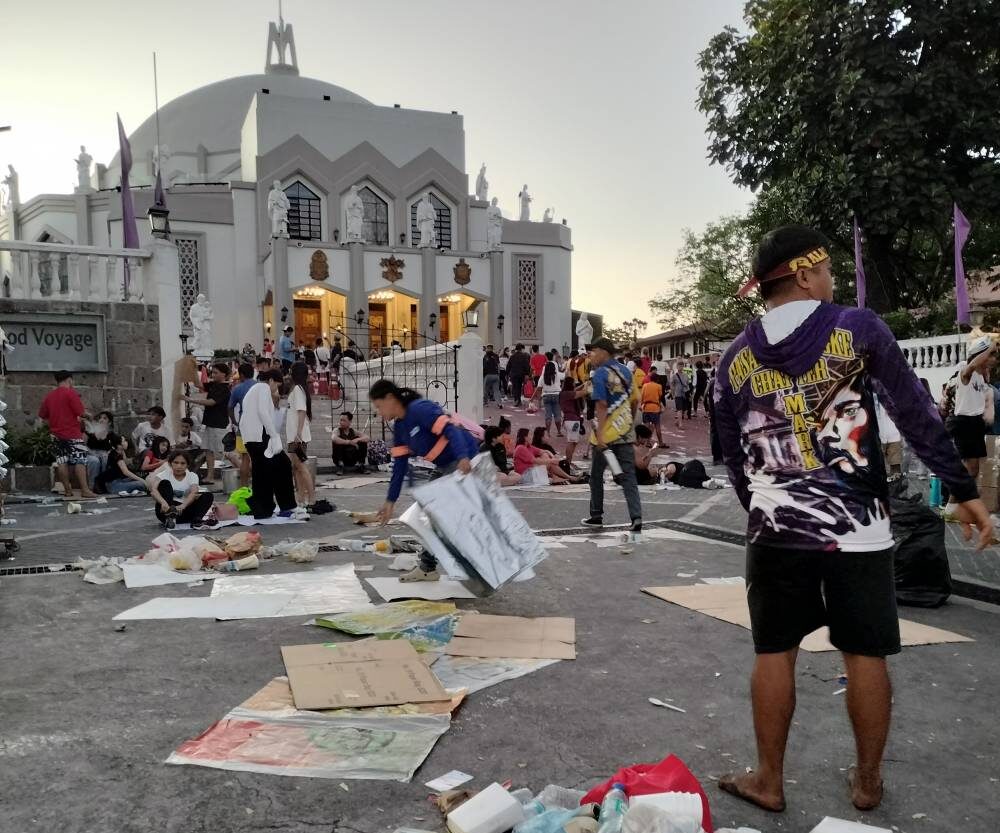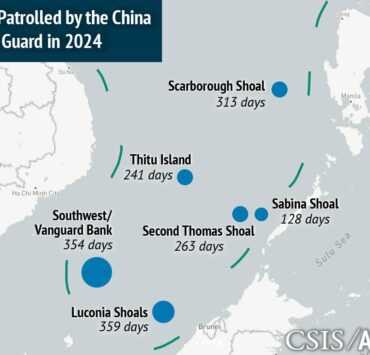Garbage woes still fixable, says group

As in many Holy Weeks past, the environmental group EcoWaste Coalition lamented that many of the country’s most popular pilgrimage sites were littered with trash during the Holy Week.
But, the group said, the country’s decades-old garbage woes go beyond churchyards and tourist sites because the problem is intertwined with the country’s 116-million population.
“The solutions to our waste problems are already enshrined in our laws, like the Ecological Waste Management Act,” said Von Hernandez, one of the founders of EcoWaste and currently global coordinator of the group Break Free From Plastic.
“Faithful implementation by LGUs (local government units) of its key provisions, like waste segregation at source and composting for organics, would solve a big chunk of the problem,” he added.
EcoWaste stressed the need for reform as it found Quiapo Church in Manila, Divine Mercy shrine in Marilao, Bulacan, and Our Lady of Grace shrine in Caloocan City already burdened with garbage even before the end of the Holy Week.
At the Our Lady of Lourdes Grotto Shrine in San Jose del Monte City in Bulacan province, EcoWaste said “heaps of trash greeted the visitors.”
“Bins and bags were found overflowing with assorted and mostly plastic trash. At the picnic area, some people abandoned used plastic bottles and paper bowls on the tables or plant boxes,” the group said.
“Plastic bags for candles were found scattered at the Stations of the Cross. The hill where the statue of the crucified Christ is depicted [was] strewn with trash,” EcoWaste added.
At the Antipolo Cathedral in Rizal, piles of trash were found at the churchyard entrance on Friday, and participants in the annual walkathon “left plastic sheets, corrugated boxes, plastic bottles, food containers and leftovers” after the event.
Litter-free churches
But EcoWaste noted that “less litter was observed at the patio of the Antipolo Cathedral compared to past years.”
The group also commended churches that were found to be “litter-free,” such as the Manila Cathedral, Sta. Cruz Church, San Sebastian Church, Sta. Ana shrine, Sampaloc Church, Ermita Church, as well as the Saint John Bosco Parish, San Ildefonso Parish; and San Pablo Apostol Parish in Makati City.
Baclaran Church in Parañaque City, Mount Carmel shrine in Quezon City, St. Gregory the Great church in Indang, Cavite; and the Sto. Nino Cathedral in Manila were also deemed litter-free.
EcoWaste acknowledged local governments and church leaders as well as street cleaners and other waste workers, in upholding the saying, that “cleanliness is next to godliness.”
The group, however, said more effective measures to control littering were still needed.
Such measures include a “year-round environmental value formation” for visitors as well as the strict enforcement of policies to ensure religious festivities remain eco-friendly.
Hernandez added that additional policies would also be needed to deal with single-use plastics, such as sachets, given how it cannot be managed or recycled safely, often ending up as litter.
“These [single-use plastics] need to be phased out in favor of alternative modes of product delivery systems like refill and reuse systems,” he said.
According to EcoWaste, a policy promoting a shift to reuse and refill systems should be promulgated as soon as possible, and it should provide incentives, including tax relief and nonmonetary rewards, for companies and establishments to make the switch.
The group further noted that local governments need to evaluate its current waste prevention and reduction strategies and identify ways to improve existing policies in consultation with other stakeholders.
“[LGUs] must see to it that ordinances requiring the ecological management of discards are actively promoted and complied with by all sectors,” EcoWaste said.
“In particular, anti-littering ordinances must be enforced at all times even in religious events and festivities,” the group added.





















